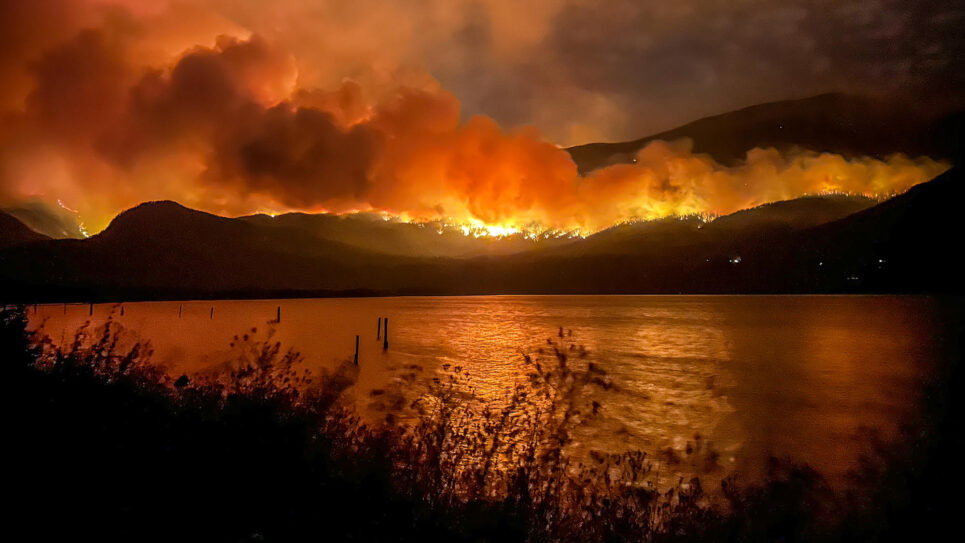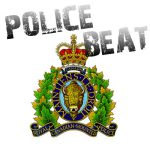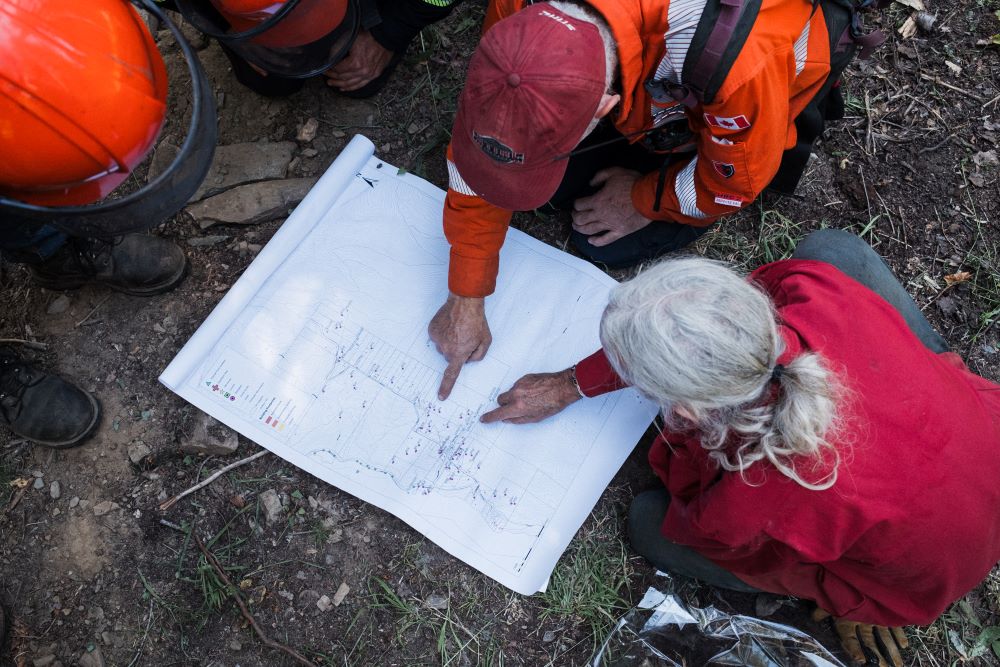Water Mapping to fight wildfires more effectively
The value of proactive water mapping
By Emily Jerome, Living Lakes Canada
In mid-July, nearly 500 wildfires across Canada were ignited by lightning strikes. In the BC Interior mountains above the small rural community of Argenta, three lightning strikes set parched vegetation ablaze. The Argenta Creek wildfire was discovered the following day on July 18, burning through thick stands of lodgepole pine and spruce.
One month prior, Living Lakes Canada had published a timely resource in collaboration with a volunteer community fire brigade known as the Argenta Safety and Preparedness Society (ASAP). Water Resources for Wildfire Suppression provides comprehensive digital maps identifying all available water sources in the Argenta and Johnsons Landing region of the West Kootenays. It also charts high-pressure standpipes, ideal pump deployment sites in streams, locations of buildings and residences, and access routes.
“When our team first shared the maps, both digital and large paper versions, with the on-site provincial crew, they were blown away,” said Rik Valentine, ASAP Crew Leader, instructor of basic wildfire and safety certifications, and co-author of the resource. “No one had ever seen anything like it.”
Easy access to local knowledge of water sources is a critical asset for firefighting crews, especially those arriving from outside the region or country. By compiling, digitizing and transforming local knowledge into interactive maps, the collaboration between ASAP and Living Lakes helped crews to quickly orient themselves and gain situational awareness at a critical time.
“This resource combines local knowledge with Living Lakes Canada’s technical knowledge of water monitoring and mapping,” said Rik. “It played an important role between ASAP and the BC Wildfire Service to protect the community.”
Kootenay Watershed Science (KWS) started to monitor watersheds in the North Kootenay Lake region in 2012, and the monitoring continued once KWS joined Living Lakes Canada’s Columbia Basin Water Monitoring Framework (CBWMF). The CBWMF is a coordinated monitoring network that tracks how climate change and other impacts are affecting water supply for communities and ecosystems across the Canadian Columbia Basin region.
“We have a decade plus of water data at our fingertips. By partnering with Rik and ASAP, Living Lakes was able to collect and digitize the knowledge ASAP had gathered from many years of studying the landscape, and planning and practicing for wildfire suppression. By putting this all together, we’ve collaborated to create a practical, on-the-ground tool that has found an immediate and valuable application,” said Paul Saso, hydrologist with Living Lakes and co-author of the resource.
The Argenta Creek wildfire burned perilously close to the community and triggered an evacuation order, but thanks to the collaborative efforts, only one small building was lost.

Argenta Creek wildfire with the community spread out on the bench below the flames. Taken just before evacuation began on July 24 at 11:30 p.m. © Jim Lawrence
According to a BC Wildfire Service statement, “Living Lakes Canada in collaboration with ASAP has gathered critical local knowledge about the Argenta and Johnsons Landing region well in advance of a potential wildfire emergency. Preparedness tools such as these bolster BC Wildfire Service’s coordination and partnerships with local resources and firefighting resources in their efforts to support response efforts in a community.”
“The collaboration in developing these resources has been integral to the BC Wildfire Service’s ability to fight the Argenta Creek wildfire. It is an incredible story that will surely change how the Province addresses emergencies in remote communities,” said Aimee Watson, Board Chair and Area D Director of the Regional District of Central Kootenay, and member of the Local Government Advisory Committee on Emergency and Disaster Management Act Regulations. “This is the new template for others to learn from.”
About Living Lakes Canada:
Living Lakes Canada is a national non-profit organization based in the B.C. Columbia Basin working towards the long-term protection of Canada’s freshwater. Visit https://livinglakescanada.ca/ for more information.























Comments